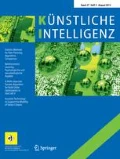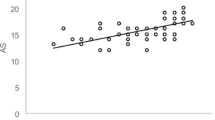Abstract
The construction and modulation of cognitive maps relies on spatial information. Their analysis is essential to understand the orientation and navigation behavior in humans. Empirical studies within the interdisciplinary cooperation of Professor Dickmann at Ruhr-University Bochum and Professor Kuchinke at the International Psychoanalytical University Berlin focus on the investigation of spatial memory and navigation performance, from a cognitive and a geographic perspective. Several studies found out that the design of topographic maps has a systematical influence on spatial memory performance. Within the frame of the Priority Programme SSP 1894 “Volunteered Geographic Information (VGI): Interpretation, Visualisation and Social Computing”, which is funded by the German Research Foundation with a term of 3 years, similar effects of landmarks and landmarks configurations will be investigated. Selected landmarks and, in particular, patterns of landmarks building geometric shapes are expected to guide spatial attention and support individual wayfinding strategies. Identifying landmark patterns will lay the foundations for automatic extraction processes and mobile map design.

Similar content being viewed by others
References
Bestgen A-K, Edler D, Dickmann F, Kuchinke L (2015) Recognition of topographic map information: the influence of map complexity and grids as artificial structuring elements on recognition memory performance. In: Proceedings of the 27th international cartographic conference ICC 2015, Rio de Janeiro
Bestgen A-K, Edler D, Dickmann F, Kuchinke L (2013) Grid or no grid: distance distortion in recognizing spatial information from complex cartographic maps. In: Proceedings of CogSci 2013—35th annual meeting of the cognitive science society, July 31–August 03, Berlin
Brychtova A, Popelka S, Dobesova (2012) Eye-tracking methods for investigation of cartographic principles. In: SGEM 2012 Conference Proceedings Volume II STEF92 Technology Ltd., Sofia, pp 1041–1048
Caduff D, Timpf S (2008) On the assessment of landmark salience for human navigation. Cogn Process 9:249–267
Dickmann F, Edler D, Bestgen A-K, Kuchinke L (2013) Spatial distortions in cognitive maps—a chance and challenge to enrich the principles of map design. Kartographische Nachrichten 63:174–181
Dickmann F, Edler D, Bestgen A-K, Kuchinke L (2015) Auswertung von Heatmaps in der Blickbewegungsmessung am Beispiel einer Untersuchung zum Positionsgedächtnis. Kartographische Nachrichten 65(5):272–280
Edler D, Bestgen A-K, Kuchinke L, Dickmann F (2014) Grids in topographic maps reduce distortions in the recall of learned object locations. PLoS One 9(5):e98148. doi:10.1371/journal.pone.0098148
Elias B, Paelke V, Kuhnt S (2006) Kartographische Visualisierung von Landmarken. In: DGfK (eds) Aktuelle Entwicklungen in der Geoinformation und Visualisierung, vol 10, pp 73–81
Golledge R (1999) Human Wayfinding and Cognitive Maps. In: Golledge R (ed) Wayfinding behavior—cognitive mapping and other spatial processes. Johns Hopkins University Press, Baltimore, pp 5–45
Klippel A, Winter S (2005) Structural salience of landmarks for route directions. In: Cohn A, Mark D (eds) COSIT 2005. Lecture notes in computer science, vol 3693. Springer, Berlin, pp 347–362
Kuchinke L, Dickmann F, Edler D, Bordewieck M, Bestgen A-K (2016) The processing and integration of map elements during a recognition memory task is mirrored in eye-movement patterns. J Environ Psychol 47:213–222
Ohm C, Müller M, Ludwig B, Bienk S (2014) Where is the landmark? Eye tracking studies in large-scale indoor environments. In: Proceedings of the 2nd international workshop on eye tracking for spatial research co-located with the 8th international conference on geographic information science, Vienna, pp 47–51
Presson CC, Montello DR (1988) Points of reference in spatial cognition: stalking the elusive landmark. Br J Dev Psychol 6:378–381
Rayner K (2009) Eye movements and attention in reading, scene perception, and visual search. Q J Exp Psychol 62:1457–1506
Richter KF, Winter S (2014) Landmarks. GIScience for intelligent services. Springer, Cham, Heidelberg, New York, Dordrecht, London
Ross T, May A, Thompson S (2004) The use of landmarks in pedestrian navigation instructions and the effects of context. In: Proceedings of mobile human-computer interaction, mobile HCI 2004. Springer, Berlin, pp 300–304
Schmidt MAR, Delazari LS (2013) Gestalt aspects for differentiating the representation of landmarks in virtual navigation. Cartogr Geogr Inf Sci. doi:10.1080/15230406.2013.807031
Schwering A, Li R, Anacta VJA (2013) Orientation information in different forms of route instructions. In: The 16th AGILE conference on geographic information science, Leuven
Siegel A, White S (1975) The development of spatial representations of large-scale environments. In: Reese HW, Lipsitt LP (eds) Advances in child development and behavior, Academic Press, New York, pp 9–55
Sorrows M, Hirtle S (1999) The nature of landmarks for real and electronic spaces. In: Freksa C, Mark D (eds) Spatial information theory: cognitive and computational foundations of geographic information science. Springer, pp 37–50
Acknowledgments
We gratefully acknowlegde the funding provided by the German Research Foundation (DFG) (Grant No. DI771/11-1).
Author information
Authors and Affiliations
Corresponding author
Rights and permissions
About this article
Cite this article
Bestgen, AK., Edler, D., Kuchinke, L. et al. Analyzing the Effects of VGI-based Landmarks on Spatial Memory and Navigation Performance. Künstl Intell 31, 179–183 (2017). https://doi.org/10.1007/s13218-016-0452-x
Published:
Issue Date:
DOI: https://doi.org/10.1007/s13218-016-0452-x




